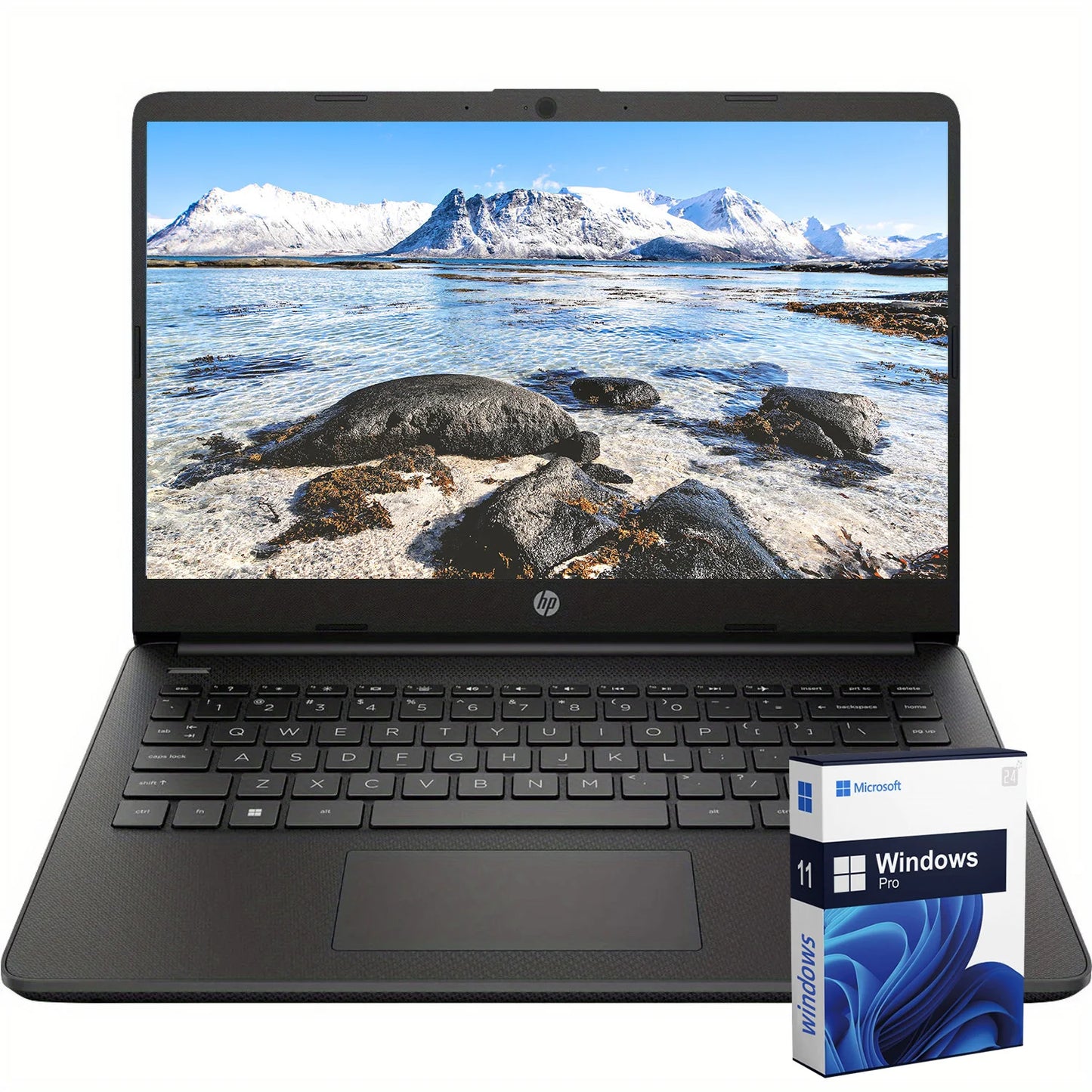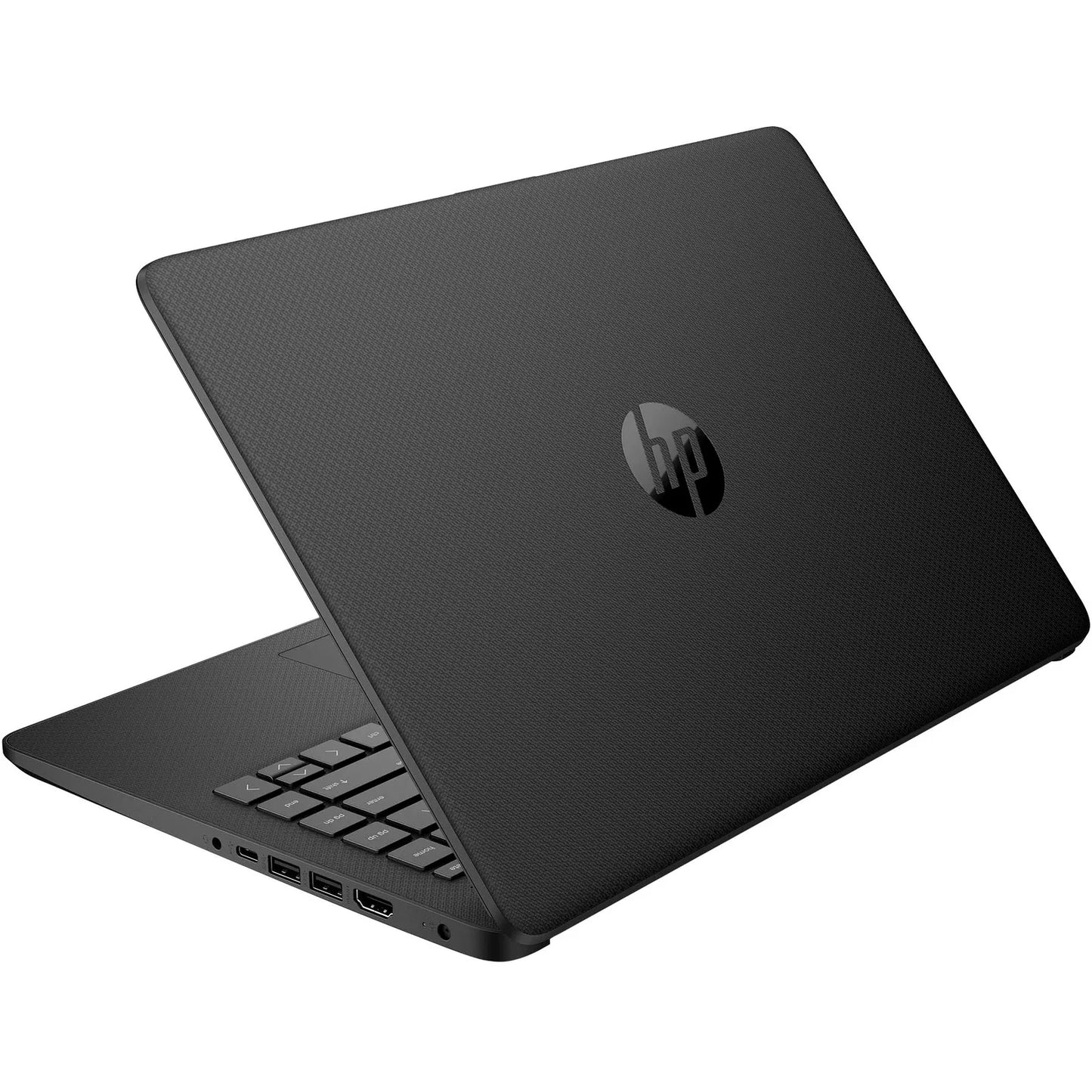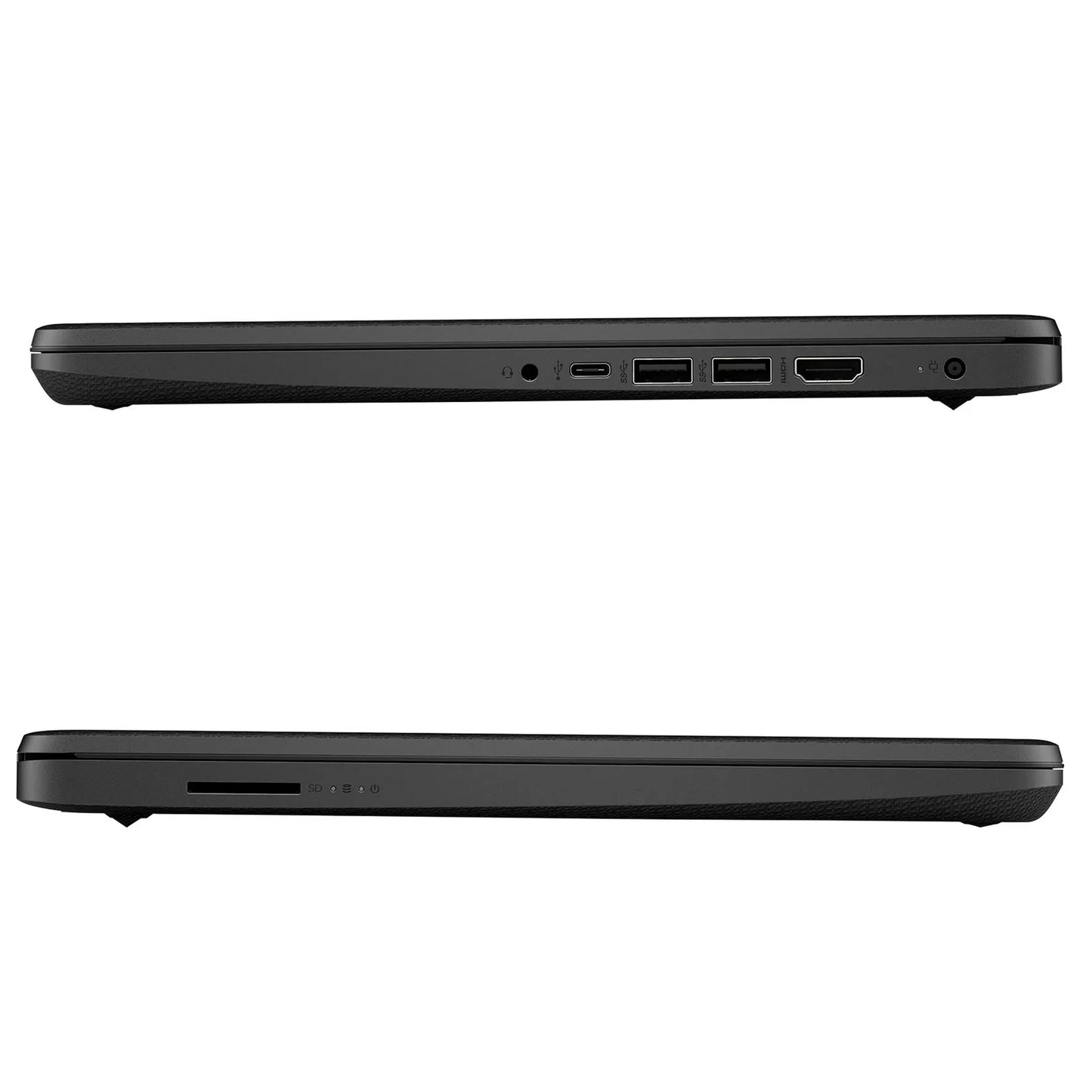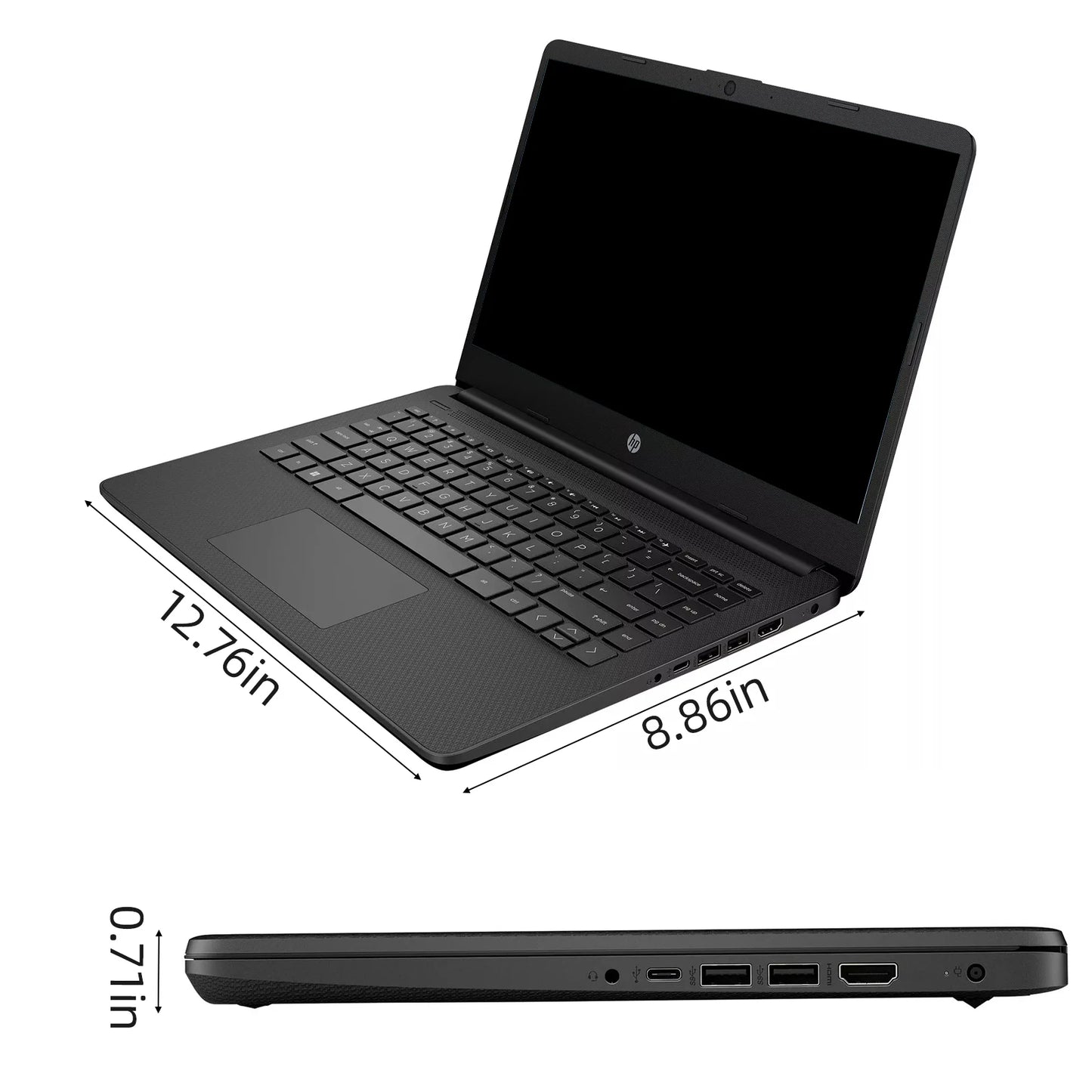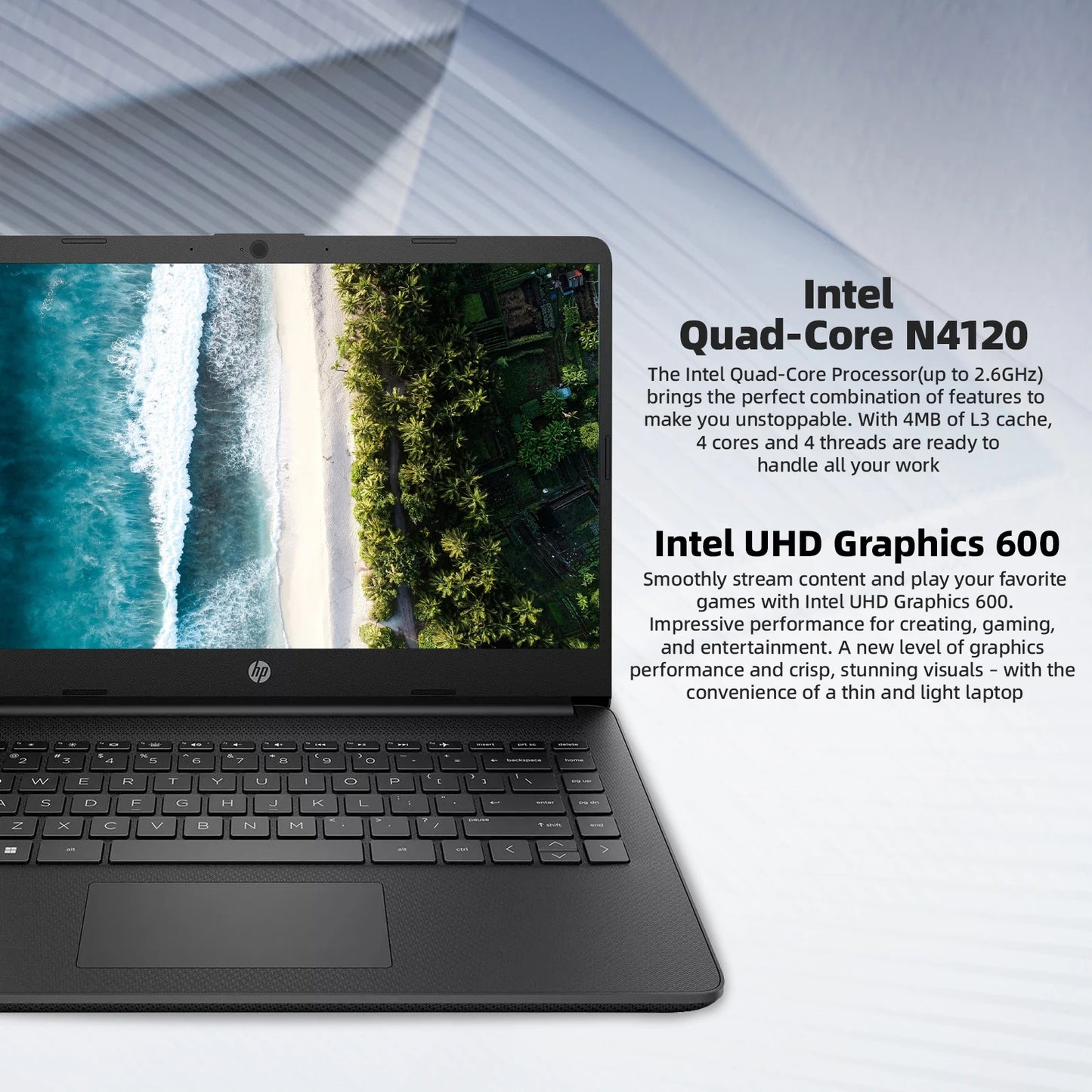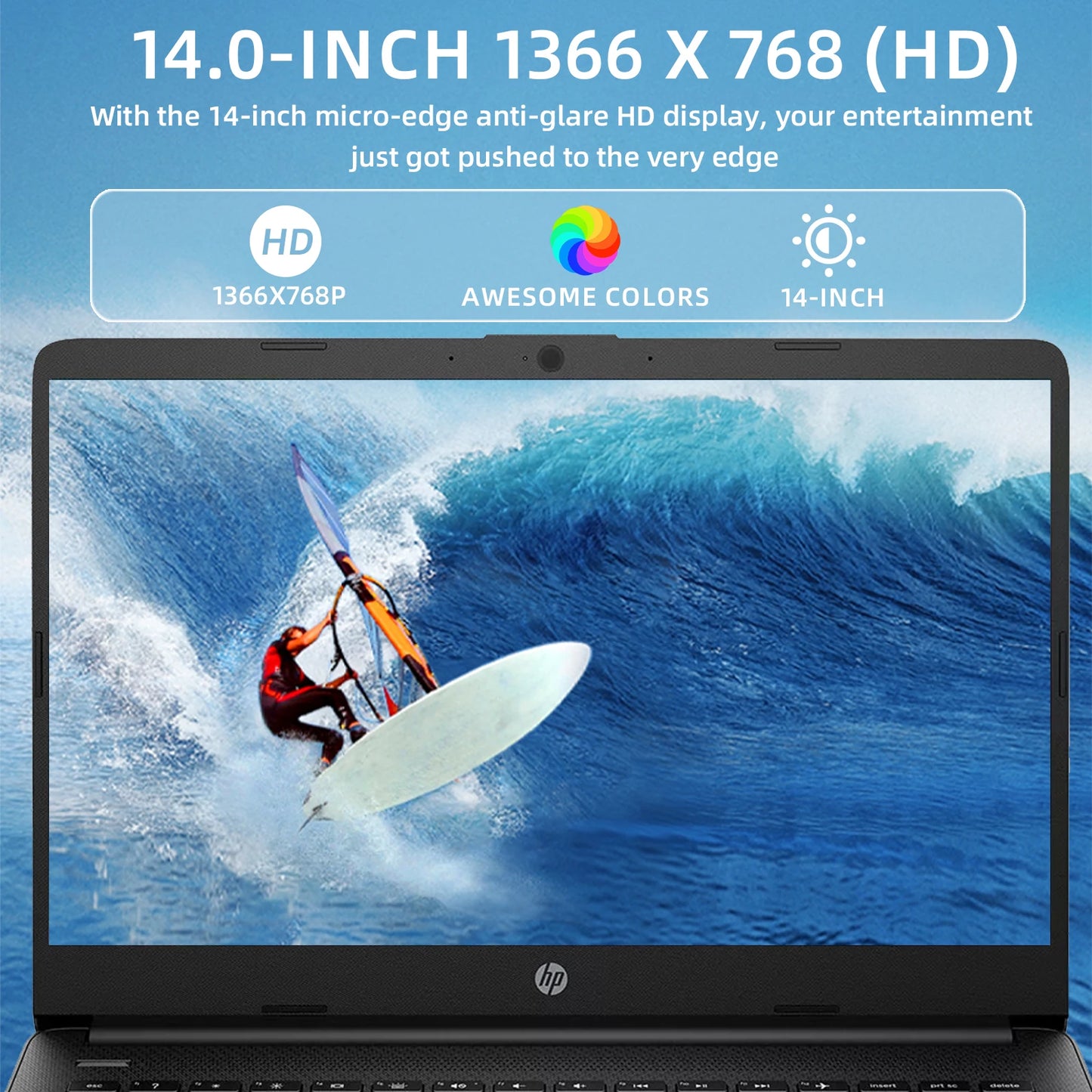calvarytechsolutions
HP 14" Business Laptop, Intel Celeron N4120,16GB RAM,384GB Storage
HP 14" Business Laptop, Intel Celeron N4120,16GB RAM,384GB Storage
Couldn't load pickup availability
SPECIFICATIONS
Core Hardware: Intel Celeron N4120
From Intel’s official specs and third‑party sources:
-
It’s a quad‑core / 4‑thread processor (4 cores, no hyperthreading beyond that).
-
Base frequency is 1.10 GHz, with a burst (single‑core) up to 2.60 GHz under load.
-
Fabricated on 14 nm, part of the “Gemini Lake Refresh” family.
-
TDP (thermal design power) is low: around 6 W, sometimes with a scenario design power ~4.8 W. This means modest power draw and modest heat generation.
-
Integrated graphics: Intel UHD Graphics 600. It has limited GPU power, meant for basic graphics tasks, video playback, UI, light media editing etc.
So overall, the N4120 is an entry‑level chip, designed for lightweight and/or budget notebooks. Good for everyday tasks: web browsing, Office apps, streaming video, light multitasking. Not meant for heavy workloads like large video edits, modern AAA games, or heavy data processing.
Memory (16 GB RAM)
-
16 GB RAM is a very beneficial upgrade over more common 4‑8 GB RAM options in budget laptops. It allows for more browser tabs open, better multitasking, more responsive performance under load.
-
Whether it’s single channel or dual channel RAM matters: the N4120 supports up to 8 GB officially per Intel’s spec sheet, but often manufacturers will include more than that and/or soldered RAM. Some of those listings say the max memory size dependent on memory type is 8 GB in spec sheets.
-
There may be mismatch: the CPU spec says max memory size is 8 GB, so having 16 GB might mean the hardware is beyond Intel’s official limits or some of the RAM may not be fully utilized or might be slower etc. It depends on how HP built the motherboard and what memory controller is used.
But generally, 16 GB is good and gives a buffer for many apps and future‑proofing.
Storage: 128 GB eMMC + 256 GB “SD Card” / Additional Storage
-
eMMC (embedded MultiMediaCard) storage is slower than a full SSD (SATA or NVMe). Boot times, launching apps etc will be somewhat slower compared to laptops with SSDs. But for many business or school tasks it’s acceptable.
-
The extra 256 GB storage (if via “SD card” expansion or perhaps an SSD) helps a lot for storing files, documents, photos, media. Performance depends heavily on how that storage is connected (e.g. via internal SATA, USB, or via slow SD interface). If via SD card slot, that tends to be slower and less reliable; if it is a second internal drive or solid‑state, better.
-
Combined, 384 GB is decent for many users: you can have OS + apps on the eMMC, keep larger files/media on the larger secondary storage.
Operating System & Software
-
Windows 11 Pro: Gives business features: better remote management, security features (BitLocker, Group Policy etc), more control. Good for enterprise or business settings.
-
1‑Year Office 365: Provides Word, Excel, PowerPoint, Outlook, etc. Useful value add; no need to buy separately that first year.
Display, Build, Ports, etc
Since these aren’t fully specified, here’s what you can reasonably expect or check:
-
Display: Likely 14‑inch, maybe HD (1366×768) or Full HD (1920×1080). Boiled down: budget business / student models often go for Full HD for clarity, but sometimes cheaper ones use HD. Think about how sharp you want the display, brightness etc.
-
Ports: USB‑A, maybe USB‑C, HDMI, headphone jack. Business models often include at least one USB‑C, perhaps Ethernet, sometimes webcam, WiFi + Bluetooth.
-
Battery life: With the N4120 being low power and light hardware, could get reasonable battery life for light tasks (web, Word, streaming). But display brightness, wireless usage etc will affect this.
What It Will Handle Well
Here are the kinds of tasks this laptop will likely do smoothly:
-
Web browsing with multiple tabs (but not dozens of extremely heavy ones)
-
Microsoft Office (Word, Excel, PowerPoint)
-
Email, video conferencing (Zoom / Teams etc) at standard definition (720p or maybe 1080p)
-
Streaming video (Netflix, YouTube)
-
Basic photo editing, lighter apps
-
Light multitasking
Suggested Uses & Who It’s Good For
This kind of laptop works well for:
-
Students / school work
-
Office tasks: typing, spreadsheets, presentations
-
Remote work (email, browsing, light multitasking)
-
As a secondary / travel laptop
-
Business contexts where portability and battery matter more than brute performance
Share
